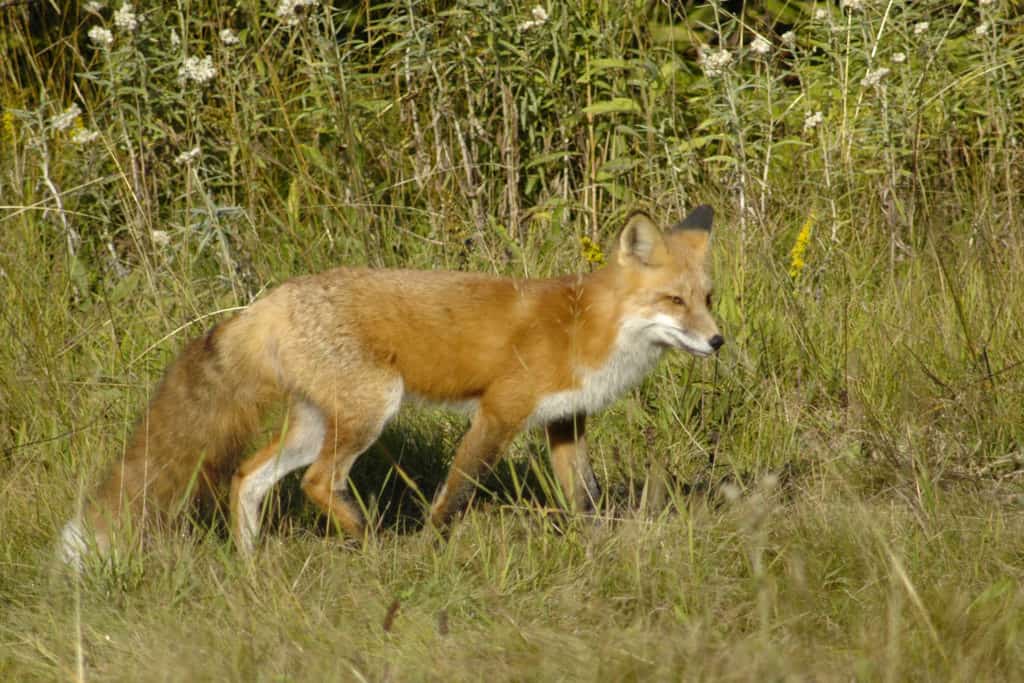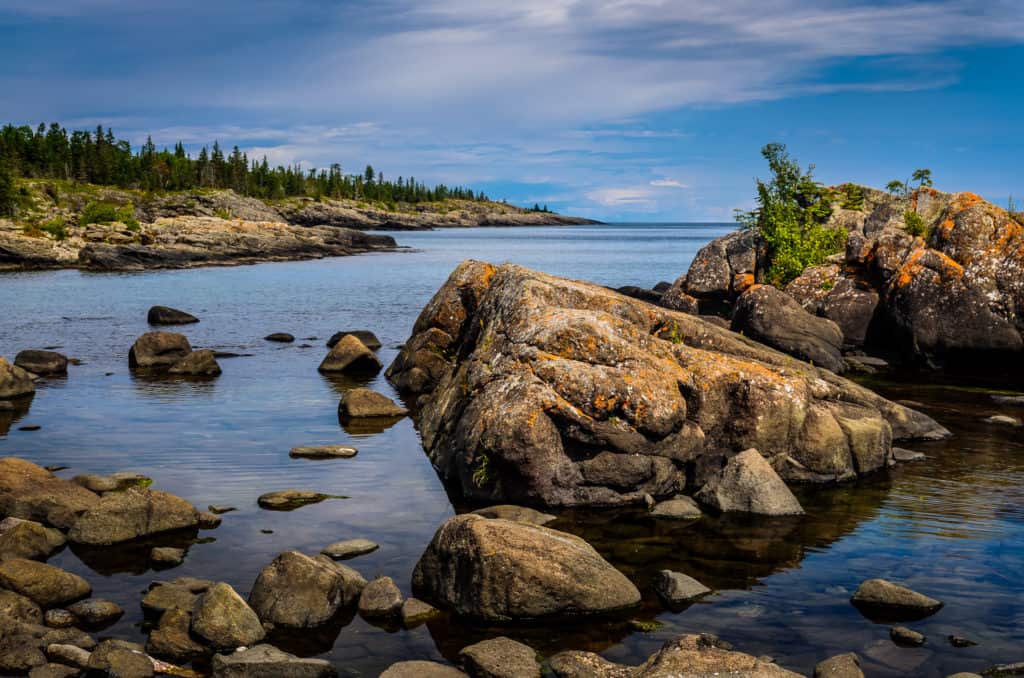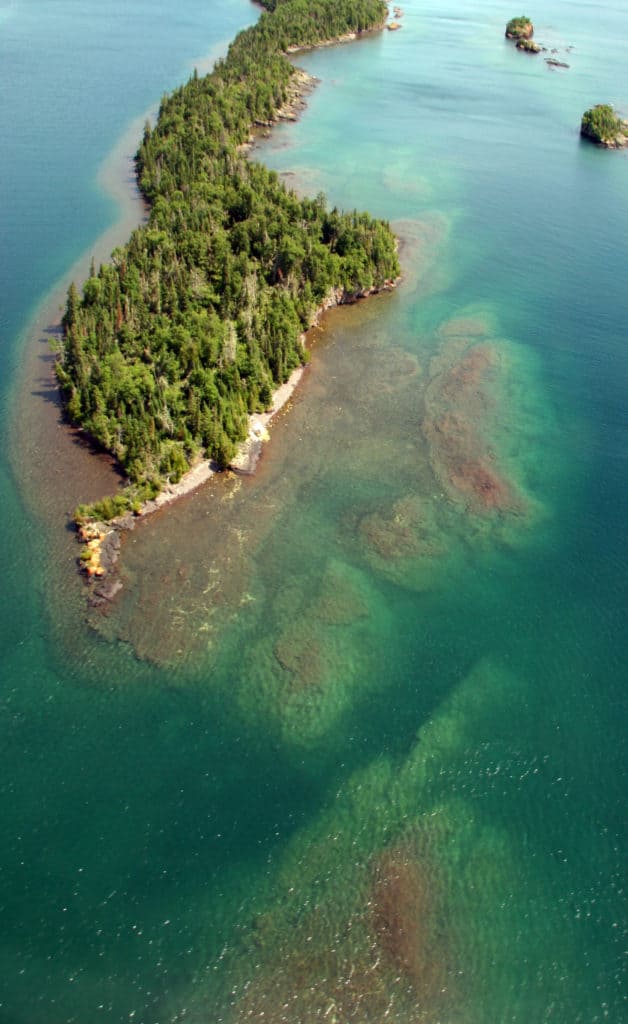Few of the 63 National Parks in the United States are as isolated as Isle Royale National Park in Michigan, and fewer yet are actual islands. Surrounded by the country’s northernmost Great Lake, Lake Superior, and comprising three main entry points, the degree of solitude this island park affords visitors is matched only by its exquisite beauty and massive opportunities for outdoor recreation on both land and water. Isle Royale National Park is the second largest island in the Great Lakes and a total dreamscape for hikers, fishers, boaters, paddlers and scuba divers (there are 10 major shipwreck sites to explore).
While it may be a bit challenging for you to get to this archipelago — you have to clear Lake Superior first, which means you can only travel to the park by ferry or seaplane (see travel info below) — the experiences you’ll have and the memories you’ll make in the park once you arrive will more than compensate for your efforts.
Among the memories (and photos) you’ll come away with will likely be those of wildlife you spot. Every time you see a critter on legs, think about the fact that the first mammals that made the park home had to cross 14 miles of icy Lake Superior waters to get there.

Mammals Residing in Isle Royale National Park
With 36 wilderness campgrounds, 165 miles of wilderness trails and 18 different mammal species in the park, you have an excellent chance of seeing both small and large animals as you explore from red foxes, otters and beavers to larger creatures like wolves and moose. While it’s super cool to see any animal in its natural habitat, moose and wolf sightings in this park are particularly prized. Both species roam all areas of the island, so keep an eye out wherever you are.
Moose
Moose are the most sizable mammals on Isle Royale. They’ve been living in the park since the early 1900s in fluctuating numbers. The park’s wolves are their main predator so there’s an inverse relationship in terms of population numbers.
In summer, the best place to spot moose is alongside the inland lakes and beaver ponds where the creatures go to cool down and feed on aquatic vegetation. When they’re not feeding, they hang out in the shaded forest areas. If you have your heart set on seeing moose (and you should because they’re majestic), your best bet is to hit these hot spots which are known sites of past sightings: Washington Creek in Windigo, Ojibway Lake, Feldtmann Lake and Hidden Lake in Tobin Harbor.
Important Tips: Make sure to keep a safe distance from moose (read: stand far back), especially in September and October when the bulls are in rut and aggressive. Don’t ever get between a cow and her calf. If you accidentally come near a moose, back away slowly and hide behind a tree or large rock to block its view of you.
Gray Wolves
Gray wolves, aka timber wolves, crossed over an ice bridge that formed between the island and Canada in the 1940s and have been living in the park ever since. Currently there are only a few of them on the island and they’re afraid of people, so if you do spot one, consider it a magical moment. Don’t let the low probability of spotting the thick gray (or sometimes reddish or black) coat of a gray wolf stop you from trying. The best places to see them are along lakeshores and hiking trails, and in open areas.
Red Fox
Speaking of canine, you’re much more likely to see a red fox than a wolf in Isle Royale National Park. Campers can spot the wily creatures (their coats range in color from rusty red to dark grey or brown) in campgrounds because they tend to forage for human food (don’t feed them!). Hikers can spot them in open areas, where they hunt for red squirrels, deer mice, snakes, salamanders and birds that nest on the ground.

Birding in Isle Royale National Park
The park’s remoteness and relative silence also make it an ideal place for tuning in to birdsong — and for identifying any number of species by their sounds. Among the species that thrive in the forest areas of the park are Sharp-tailed Grouse and Sandhill Cranes, which are common in the drained wetlands. It’s also easy to spot broad-winged hawks, American black ducks, Canada geese and loons — you can see the full list of bird species in the park (rare, occasional and common) here.
Day Hiking in Isle Royale National Park
Given the hours of travel required to reach the park and its many wonderful campgrounds, visitors frequently plan camping trips, which may also involve boating, paddling and fishing activities. But day hiking trips are another option — the park’s hiking trails let visitors experience its wildlife and explore a broad range of wilderness features up close in a fairly short amount of time.
Isle Royale’s trails wend their way along the Lake Superior shore, cross the park’s huge forested interior, pass streams and lakes of various sizes, and trace the island’s high ridges. There are many possible hiking and backpacking itineraries for you to follow, including short and long hikes around Rock Harbor on the northeast end of the island, and Windigo on the southwest end. Check in with the park Visitor Centers to get ideas, and below, check out the travel info for day trips.

Getting to Isle Royale From Michigan
The park is open from April 16-October 31. If you’re not taking your own boat, you’ll be relying on a ferry (no cars allowed) or seaplane to travel to the park from Michigan’s mainland. But to catch either one you first have to travel to either Houghton, located in the Upper Peninsula portion of the state, or to Copper Harbor, at the tip of Keweenaw Peninsula in the Upper Peninsula.
In Houghton
By Ranger III ferry: In Houghton, head to the Park’s Mainland Headquarters (Isle Royale Houghton Visitor Center) to catch the ferry. The ride takes 6 hours so plan on staying overnight. You’ll arrive in Rock Harbor and continue from there to Windigo via the Voyageur II or an Isle Royale Seaplanes flight.
Phone: 906-482-0984. Address: 800 E. Lakeshore Dr., Houghton, MI 49931.
By Isle Royale Seaplane: Head to the Hancock Portage Canal Seaplane Base. If you opt to go by seaplane (a 40-minute flight) you’ll get a bird’s eye view of the island, the lake and their surroundings as you fly, which will not only clue you in to their true scale but also cast their rugged beauty in a whole different light. You’ll arrive in Rock Harbor and can continue from there to Windigo via the Voyageur II or an Isle Royale Seaplanes flight. Note: This option allows for a day trip to the park.
Phone: 900-483-4991. Michigan address: 21205 Royce Road, Hancock, MI 49930
In Copper Harbor
By Isle Royale Queen IV ferry: In Copper Harbor, head to The Isle Royale Line location to catch the ferry. The ride takes 3.5 hours. You’ll arrive in Rock Harbor and can continue from there to Windigo via the Voyageur II or an Isle Royale Seaplanes flight. Note: This option allows for a day trip to the park.
Phone: 906-289-4437. Address: 14 Waterfront Landing
Traveling to Isle Royale from Minnesota
In Grand Portage
You can also travel to Isle Royale National Park from Minnesota’s Grand Portage Marina on the Voyageur II ferry (2 hours to Windigo) or Sea Hunter III ferry (1.5 hours to Windigo). Address: 402 Upper Rd. Note: These options allow for a day trip to the park.
In Grand Marais
Depart from Grand Marais, Minnesota on an Isle Royale Seaplanes flight (30 minutes to Windigo) from the Cook County Airport. Address: 123 Airport Rd.
Day Trips From Michigan and Minnesota
To visit for a day, head to Rock Harbor on the Isle Royale Queen IV ferry from Copper Harbor, MI, or take an Isle Royale Seaplanes flight and spend 3 hours exploring. Head to Windigo aboard the Seahunter III ferry from Hat Point Marina in Grand Portage, MN, or take an Isle Royale Seaplanes flight.
